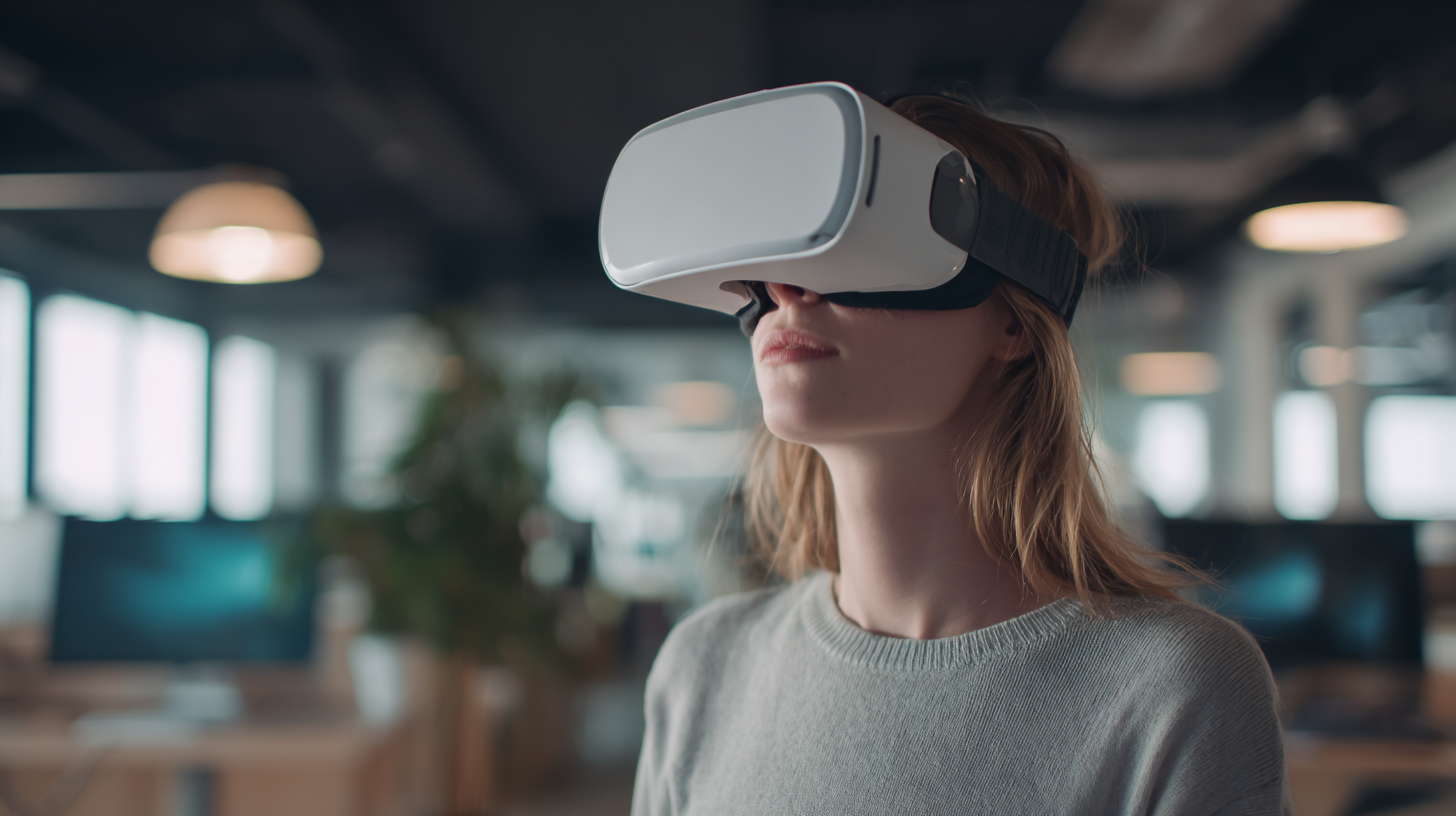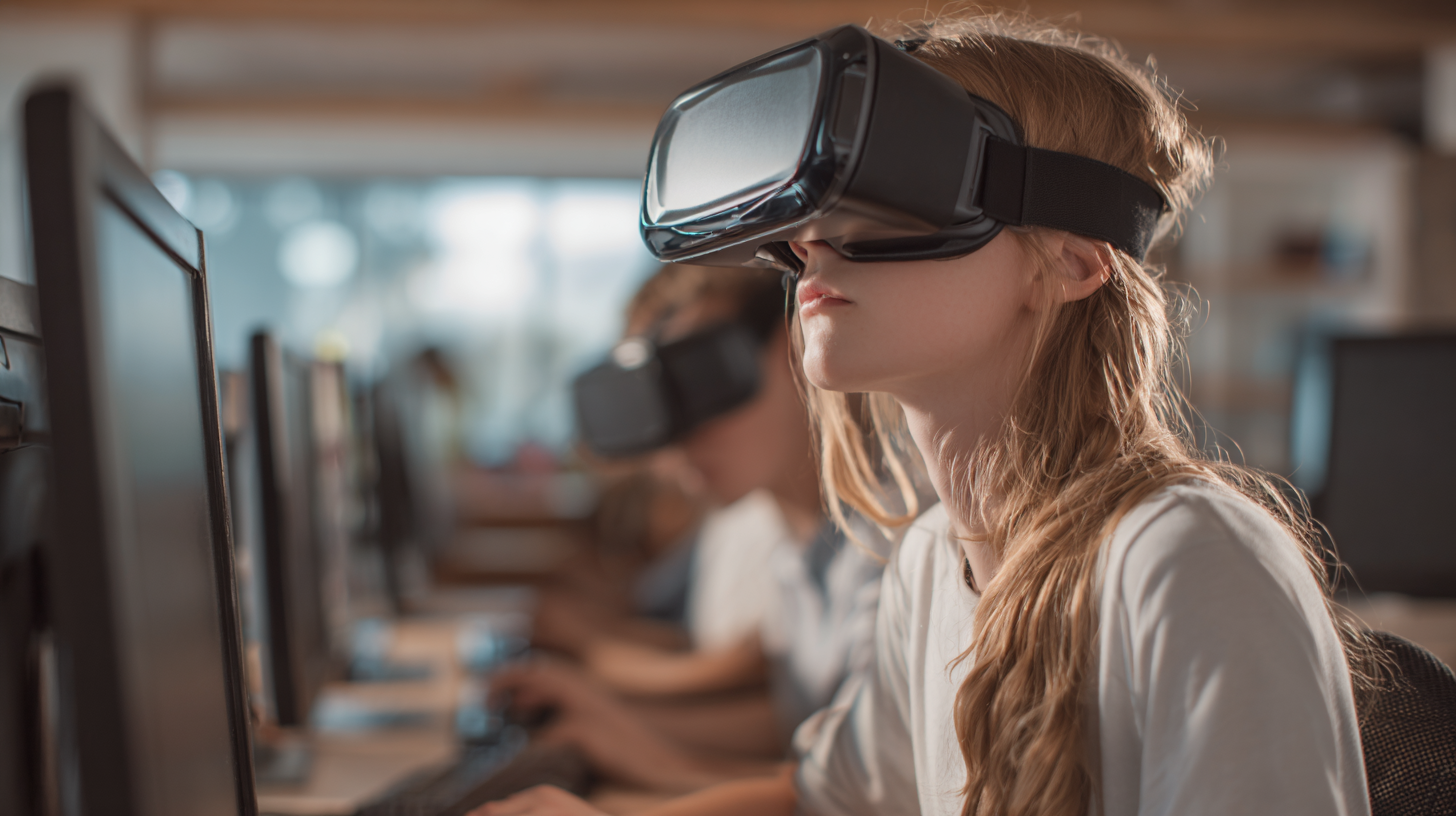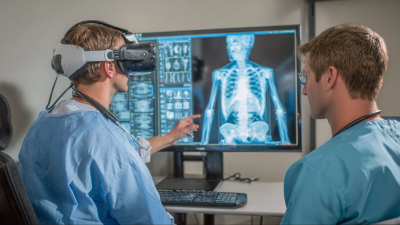As educational institutions and training organizations continue to seek innovative methods to enhance learning experiences, the integration of Virtual Reality Equipment is emerging as a transformative solution. According to the latest report from MarketsandMarkets, the global virtual reality in education market is projected to grow from USD 1.8 billion in 2022 to USD 12.6 billion by 2027, representing a staggering compound annual growth rate (CAGR) of 47.0%. This significant growth underscores the increasing recognition of virtual reality's potential to offer immersive and interactive learning environments that can greatly improve knowledge retention and engagement. Moreover, a study by PwC indicates that employees in VR-based training programs are 4 times more focused than in traditional classroom settings. The future of Virtual Reality Equipment in the educational and training sectors not only promises to enhance learner engagement but also aims to provide equitable, accessible, and impactful training solutions across various industries.

The integration of virtual reality (VR) into the education and training sectors is gaining momentum, driven by a growing demand for personalized learning experiences. Recent innovations in VR-based assessments are providing educators with tools to evaluate student performance in immersive environments. For instance, a 2023 report projected significant growth in the VR education market due to the increasing adoption of innovative assessment technologies that cater to diverse learning styles. This trend is expected to enhance the educational experience by allowing for tailored lesson plans and real-time feedback, ultimately addressing individual needs more effectively.
Moreover, the collaboration between leading educational institutions and technology companies is catalyzing the digital transformation of education. Research initiatives, such as those undertaken by universities in partnership with tech firms, are exploring scene-driven technological innovations to build a new infrastructure for education. These advancements are not limited to VR applications for learning but extend to creating integrated platforms that serve multiple educational facets. By 2032, the AI market in education is predicted to exceed $30 billion, indicating a robust connection between technology and educational enhancement. As the industry evolves, the synergy of these innovations promises to redefine how educational content is delivered and absorbed.
| Trend | Description | Impact on Education | Current Adoption Rate |
|---|---|---|---|
| Immersive Learning Environments | Utilizing VR to create realistic simulations for various subjects. | Enhances student engagement and retention of information. | 30% |
| Collaboration Tools in VR | Enabling students and educators to collaborate in a virtual space. | Promotes teamwork and communication skills. | 25% |
| VR for Skill Training | Hands-on practice in a safe and controlled virtual environment. | Reduces training costs and risks associated with real-life experiments. | 40% |
| Assessment and Feedback in VR | Integrating assessment tools within VR learning scenarios. | Provides real-time feedback and personalized learning experiences. | 20% |
| Accessibility Enhancements | Making VR educational tools available for diverse learning needs. | Increases inclusivity and accommodates different learning styles. | 15% |
The integration of virtual reality (VR) into education and training programs is transforming the way learners engage with complex subjects. For instance, a recent study evaluating a VR human anatomy simulation program demonstrated significant improvements in understanding among undergraduate medical students. This immersive approach allows students to explore anatomical structures in a 3D environment, enhancing retention and comprehension in a way traditional textbooks cannot achieve.
Moreover, the application of VR in training extends beyond healthcare. Industries are increasingly adopting VR for training purposes, particularly in sectors such as construction and safety. Companies have reported reduced safety incidents and improved training outcomes by simulating real-world scenarios in a controlled environment. As immersive technology continues to evolve, the benefits of VR in fostering experiential learning and skill development are becoming increasingly evident, making it an essential tool for both educators and trainers across various fields.
This chart illustrates the various benefits of implementing Virtual Reality (VR) in education and training sectors. The data reflects the importance of different advantages that VR technology brings to training programs, highlighting its effectiveness in enhancing learning experiences.
The integration of Virtual Reality (VR) in educational settings has gained momentum, yet it is not without its challenges and limitations. One significant hurdle is the disparity in access to necessary technology, particularly in resource-limited environments. Many educational institutions in developing regions struggle to adopt VR tools due to financial constraints and a lack of infrastructure, which can hinder the equitable distribution of educational opportunities. This digital divide often results in a scenario where only affluent schools or universities benefit from advanced learning technologies, leaving behind those in need of innovative educational resources.
Moreover, the effective implementation of VR in education requires not just hardware and software but also skilled instructors who are trained to utilize these technologies effectively. The resistance to change and the learning curve associated with new technologies can create additional barriers. Educators must adapt their teaching methodologies to integrate VR seamlessly into their existing curricula. Additionally, there is an ongoing debate about the validation of VR as a pedagogical tool, with some questioning its impact on learning outcomes when compared to traditional instructional methods. Exploring these challenges is essential to harness the full potential of VR in enhancing educational experiences and improving learner outcomes.
 The future of virtual reality (VR) equipment in the education and training sectors is poised for significant innovation and development. As institutions focus on digital transformation, an increase in funding and resources is channeled toward enhancing educational tools with VR capabilities. The direction set by national educational frameworks like the proposal for digital education magnifies the urgency for integrating advanced technologies. By examining current advancements, such as initiatives that combine AI with VR for language teaching, we see the potential of immersive environments to cater to diverse learning styles.
The future of virtual reality (VR) equipment in the education and training sectors is poised for significant innovation and development. As institutions focus on digital transformation, an increase in funding and resources is channeled toward enhancing educational tools with VR capabilities. The direction set by national educational frameworks like the proposal for digital education magnifies the urgency for integrating advanced technologies. By examining current advancements, such as initiatives that combine AI with VR for language teaching, we see the potential of immersive environments to cater to diverse learning styles.
Moreover, as the VR industry matures, with hardware and software becoming more accessible, educational institutions can harness these technologies to create engaging and impactful learning experiences. Innovations such as high-fidelity simulations and interactive learning environments will redefine traditional teaching methodologies. With continued investment and research, the outlook for VR in education points toward fostering more personalized learning journeys, expanding the boundaries of what is possible within classroom settings. The collaborative efforts among various sectors indicate a vibrant future where education will not only adapt to but also thrive on technological advancements.
Virtual reality (VR) is redefining the landscape of education and training by providing immersive learning experiences that enhance engagement and retention. A report by PwC indicates that learners in virtual reality environments demonstrated a 76% improvement in information retention compared to traditional classroom settings. One notable case study involves Stanford University’s Virtual Human Interaction Lab, which utilized VR to simulate real-world scenarios in medical training. Trainees reported a significant increase in confidence and skill proficiency after participating in VR simulations that mirrored high-stakes medical situations.

Another successful application of VR in education is the use of immersive simulations in vocational training programs. For instance, the University of Kent employed VR technology to train engineering students, allowing them to explore complex machinery in a safe virtual environment. According to a study published in the Journal of Interactive Learning Research, this hands-on approach resulted in a 30% increase in practical skills assessment scores compared to traditional methods. As institutions continue to adopt VR, its potential to create interactive and personalized learning experiences stands to transform not just educational frameworks but also industry training protocols.






